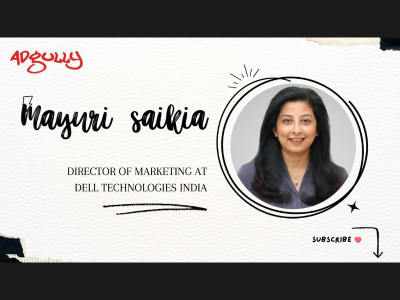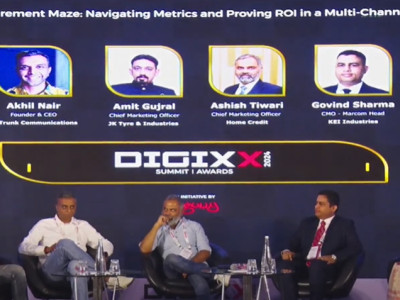The deep tech penetration and how it is reshaping Public Relations
As with all major sectors and industries, Public Relations, too, has not remained immune to digital transition. The development has been a gradual one, but gained momentum during the pandemic period. As stated by Nikhil Dey, Executive Director, Adfactors PR, in an earlier interaction with Adgully, “Deep Tech and Deep Relationships will define 2023”. According to Dey, using technology to listen, predictive data analytics and a host of new ways to read which way the wind is about to shift will be at the front end of the discipline. New age tech tools and platforms such as AI/ AR/ ML and the Metaverse have started making significant inroads into the PR and corporate communications domain. Today, digital PR works hand in hand with SEO and SEM for maximum reach and engagement.
As per a McKinsey report, the consumers embraced five years’ worth of digital adaptation in just eight weeks into the pandemic. The report also revealed that most companies will need to build new digital businesses to stay economically viable.
Digital PR in 2023
Vandana Sandhir, India Lead, Six Degrees BCW and Chief Client Strategy Officer, BCW India Group, emphasises on the digitalisation in PR in depth by breaking it down into three factors:
Data and analytics: The importance of relying on data and analytics, both for guiding the campaign direction as well as to measure its impact, has been a part of conversations in the industry. This year, it will become even more critical. Given the stress on budgets, campaigns will need to be more targeted and deliver sharper results. Data and analytics will be key for ensuring both.
AI: A lot is being said about how AI platforms like ChatGPT and Dall-E will take over content and design jobs, respectively. The buzz around these will remain, though in my opinion, AI is a tool. Thinking, ideation, creativity – all these are very much human attributes. In fact, when you hand over repetitive tasks to AI, it gives you more time and mind-space to actually think of new, innovative solutions.
Influencer marketing: The need for storytellers with reach, relevance and resonance will continue, even if there is more (required) regulation. The important thing will be to choose the kind of storyteller that works best for the brand. Often, a more relevant micro-influencer can have a better impact than a celebrity. The key is to be authentic and relevant.
Malvika Sinha, Technology Practice Lead, Ruder Finn India, noted, “The PR industry is known for its quick adoption of digital technology tools and this trend is expected to continue in 2023. While Machine Learning can help PR professionals in identifying the target audience, sentiment analysis, media monitoring, and content creation, Artificial intelligence (AI) is helping PR agencies streamline client operations and find new ways to enhance a brand's reputation. Technologies like virtual reality (VR), augmented reality (AR) and application program interfaces (API) are redefining how brands interact with their customers through digital channels such as social media, websites, and mobile apps.”
She further stated that with the rapidly expanding digital landscape, there are now more communication channels available than ever before, making it important for PR campaigns to be tailored and targeted in order to be successful. Digital technology has allowed brands and media publications to thrive by utilising their digital platforms to gain a deeper understanding of their audience and improve engagement and revenue.
While pointing out that the PR industry has always been quick in terms of adapting tech tools to upskill the process, Tarunjeet Rattan, Managing Partner, Nucleus PR, remarked, “The world of PR has always been fast paced, with professionals having to upskill on a continuous process. While a decade ago these shifts would be paced on a yearly basis within which a lot of progress could be made by the agency/ professional, these shifts are now coming in at much smaller intervals. Digital was bound to happen. There has been a lot of chatter around this for the last 5-6 years, the pandemic made the shift possible. There is no going back.”
The tech that is relevant and being innovated around PR is largely towards taking away the menial tasks and automating them, leaving the human free to look at the bigger picture and build deeper connections without being bogged down by the drudgery of list making and dockets. These tools existed in the pre pandemic years as well but were largely out of reach for a majority of the agencies because of the prohibitive costs. Today, with a lot of free tools in the market, there has been a regularisation of costs making it easier for a large number to integrate tech.
“A lot of this technology will reduce manual labour and mindless work hours, leading to better efficiency and a leaner team. This will leave the human free to think and focus on quality. This is a godsend given the talent crunch that seems to now be a perennial point of pain in the industry. That’s how agencies and communications departments should look at integrating tech, if they have not already done so,” Rattan added.
Implications of tech tools in the PR ecosystem
According to Ruder Finn’s Malvika Sinha, “Tech integration in PR has brought about a paradigm shift in the industry. Media monitoring software, analytics, workflow applications, etc., are helping PR pros to process data faster and improve their relationships with the customers. Measuring and analysing the impact of PR campaigns enable data-driven decision making and more accurate reporting to clients. Additionally, digital and tech-first PR strategies allow for more targeted and personalised outreach, leading to effective communication with key audiences. Automation of some of the PR tasks can lead to cost-effectiveness and a more efficient workflow.”
At the same time, Sinha also highlighted a flipside to this that needs to be kept in mind – which is that the increasing reliance on technology in PR also brings new challenges, such as the need for PR professionals to stay up to date with the latest technology and the potential for a loss of personal touch in communication. “It is thus important for PR experts to strike a balance between utilising technology to its fullest potential while still maintaining a human touch in their communication and relationships with their stakeholders,” Sinha added.
Gaurav Mishra, Director - Digital, Adfactors PR, noted here that the top three reasons why clients engage PR agencies continue to be – media relations, crisis counsel, and corporate reputation. He added, “The highest impact that digital, data, and technology can make on a PR firm is in supporting these core strengths. In media relations, the first aim is to maximise the impact of each media story, by expanding the arc of earned influence to the social media channels of the publishers, the journalists, the CXOs and KOLs featured in the story, and further via influencers. The second aim is to go beyond the big newspapers and business websites and build relationships with niche online publishers and content creators. The third aim is to use data to map how to best pitch specific stories to specific journalists for maximum impact.”
In crisis counseling, it is critical to understand how journalists pick up and sometimes break stories on social media, how publishers use quotations from social media in stories, and how CXOs and KOLs can strategically say things on their own social media profiles that will impact the shape of the emergent crisis situation. It is also important to understand what topics and tones trigger social media users and create a mob mentality, and advise CXOs to avoid saying things that precipitate a crisis.
Mishra further said, “In corporate reputation, the most important thing we can do is to do an outside-in mapping of the industries and the topics that the client is associated with, plot how our client is positioned in the conversational ecosystem, and identify which journalists, content creators, and key opinion leaders are shaping the conversations. With this high-context perspective, we can then effectively counsel our clients on how to protect and strengthen their reputation.”
BCW Group’s Vandana Sandhir pointed out, “Technology has long been an ally of public relations, helping campaigns reach wider. And in the past three years, it has become an even more critical element, with the need for virtual and digital-first communication. Even though things have opened up and interactions are increasingly in-person, the need for digital-first solutions hasn’t gone away. In fact, at BCW India Group, we are working on several campaigns and programmes with a digital-first strategy. So, I don’t see this as an incursion. I see it as evolution and innovation.”
Best use of tech tools (Metaverse/ AI/ VR/ ML) in PR
The Metaverse is still in its nascent stages. Most of the early marketing and communications initiatives around the Metaverse have already begun and brands have been around to create an experience or do a product launch on Metaverse.
Malvika Sinha believes that Metaverse will be a game- changer for PR. She explained, “Audiences today are keen on associating with brands that can offer immersive and interactive experiences. Given this demand, PR professionals can leverage the Metaverse to create virtual events, product launches, and other immersive experiences that allow audiences to engage with a brand in a more meaningful way. For example, a company could create a virtual reality experience that simulates a factory tour, allowing consumers to see how a product is made while also building brand loyalty and trust, by displaying the company’s values.”
Highlighting Ruder Finn’s role in the web world, Sinha said, “Ruder Finn became one of the first agencies in India to launch a dedicated Web3 service, catering to brands looking at making that transition from Web2 to Web3. Delivering comprehensive and integrated communications strategies, as a team, we work closely with clients to build new age communities, creating experiences and products that are built on the blockchain. NFTs are fast becoming an essential channel for customer acquisition and retention. Done well, this builds loyalty, and we are quite excited to explore this space further. AI, on the other hand, can help PR professionals analyse and understand their audiences better. AI-powered tools can identify key influencers, predict which messages are likely to resonate with different groups of people, and even help with the creation of content. Additionally, AI-based chatbots and virtual assistants can be used to automate routine tasks, such as scheduling meetings or responding to frequently asked questions, freeing up PR professionals to focus on more strategic activities. AI can also serve as a great tool for monitoring and tracking the performance of campaigns, measuring the effectiveness of messages, and optimizing the content. Overall, Metaverse and AI can help PR professionals to create more engaging and personalized campaigns.”
Meanwhile, Gaurav Mishra of Adfactors PR believed that after the initial gold rush around the Metaverse has settled down, more thoughtful use cases will emerge over time. According to him, generative conversation and knowledge AI tools like ChatGPT have a more immediate role to play in terms of:
- Researching the context on a client, an industry, or a topic,
- Doing divergent thinking on what creative routes or content ideas can be taken, and
- Even sharpening the narrative and storytelling in a specific context.
These tools are also at an initial stage and training the tool to return useful answers is a critical part of using them effectively.
Elaborating on the Metaverse from a PR perspective, Tarunjeet Rattan said, “Not surprisingly, these terms are already in use in the brand world…but only for PR! Other than the ones developing Metaverse and AI, etc., the PR industry was the first one to take a deep dive into it, as we had to communicate about it to the larger audience and make sense of it for them. When it comes to the industry itself, I believe over the next couple of years this will be integrated into communication channels just like all the others on our list. Its efficiency and impact, however, is still to be proven.”
One of the key tasks asked of PR is to communicate a specific message to a set audience in the most efficient manner. Depending upon the target audience that can either be a Metaverse or not. That is very different from doing something just for the heck of doing it. “A smart PR person will understand the difference and act accordingly. As for AI, it is a godsend with multiple levels of menial hours taken off the timesheet,” Rattan quipped.
Best practices for the PR industry to leverage digital and technology
“The keys to the use of digital and technology are relevance and authenticity,” according to BCW Group’s Vandana Sandhir,
Gaurav Mishra, Adfactors PR observes, Digital, data, and technology have been a part of the PR business for a decade and a half now.
Further he adds, "Our aim is to focus on the few simple things that hundreds of clients are willing to pay a premium for, recruit digital talent, train PR talent, and create tools and templates to deliver them at scale, then sharpen our training and offering so that we continue to become better at them, relative to the market.”
Tarunjeet Rattan concluded by pointing out some key practices, “Do a search for tech for PR and Communication and you will come up with pages and pages of recommendations. It can be overwhelming. The trick is to:
Add context.
Understand what is relevant for you, your organisation and the brand that you handle.
Upskill to understand how to use the tech to your benefit.
Run the tech … don’t let the tech run you.”


















Share
Facebook
YouTube
Tweet
Twitter
LinkedIn